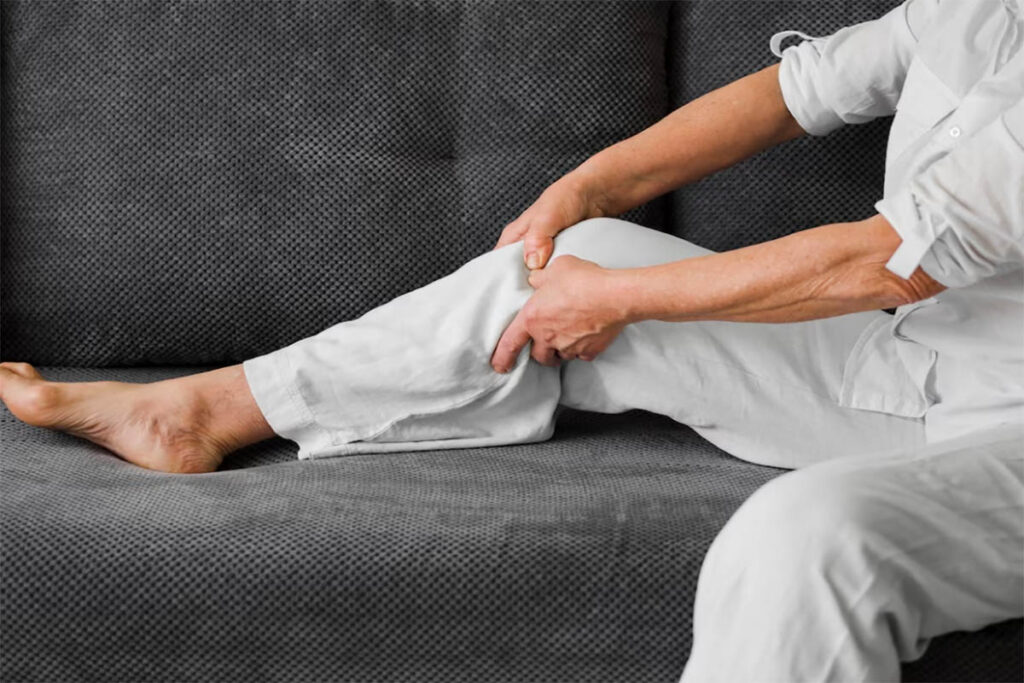Introduction
Plantar fasciitis is a common foot condition that affects millions of people worldwide. It is characterized by inflammation of the plantar fascia, a thick band of tissue that runs along the bottom of the foot and connects the heel to the toes. Plantar fasciitis can cause significant pain and discomfort, especially during the first steps after waking up or after prolonged periods of inactivity. In this comprehensive 2500-word article, we will delve into the causes, symptoms, treatment options, and prevention strategies for plantar fasciitis. Understanding this condition is essential for effectively managing symptoms and maintaining optimal foot health.
Table of Contents
- What is Plantar Fasciitis?
- Causes and Risk Factors
- a. Overuse and Repetitive Strain
- b. Foot Structure and Mechanics
- c. Age and Weight
- d. Certain Activities and Occupations
- e. Improper Footwear
- Symptoms of Plantar Fasciitis
- Diagnosing Plantar Fasciitis
- a. Physical Examination
- b. Imaging Studies
- c. Gait Analysis
- Treatment Options
- a. Rest and Activity Modification
- b. Stretching and Strengthening Exercises
- c. Orthotic Devices
- d. Night Splints
- e. Non-Steroidal Anti-Inflammatory Drugs (NSAIDs)
- f. Extracorporeal Shock Wave Therapy (ESWT)
- g. Corticosteroid Injections
- h. Physical Therapy
- i. Surgery (in severe cases)
- Preventing Plantar Fasciitis
- a. Proper Footwear
- b. Gradual Increase in Activity Level
- c. Stretching and Strengthening Routine
- d. Maintaining a Healthy Weight
- Conclusion
1. What is Plantar Fasciitis?
Plantar fasciitis is a common foot condition characterized by inflammation of the plantar fascia, a thick band of tissue that spans from the heel bone (calcaneus) to the base of the toes. This fibrous tissue supports the arch of the foot and helps to absorb shock during walking and running. When the plantar fascia becomes inflamed or irritated, it can lead to pain and discomfort, particularly around the heel and the arch of the foot.
2. Causes and Risk Factors

a. Overuse and Repetitive Strain
One of the primary causes of plantar fasciitis is overuse and repetitive strain on the plantar fascia. Activities that involve prolonged standing, walking, or running on hard surfaces can lead to micro-tears and inflammation in the fascia.
b. Foot Structure and Mechanics
Individuals with certain foot structures, such as flat feet (pes planus) or high arches (pes cavus), may be more prone to developing plantar fasciitis due to abnormal foot mechanics.
c. Age and Weight
Plantar fasciitis is more common in individuals between the ages of 40 and 60. Excess weight can also contribute to the development of plantar fasciitis, as it places added stress on the feet.
d. Certain Activities and Occupations
Athletes, especially runners, dancers, and those involved in activities that place repetitive stress on the feet, have a higher risk of developing plantar fasciitis. Additionally, individuals with occupations that involve prolonged standing or walking may also be susceptible.
e. Improper Footwear
Wearing shoes with inadequate support or cushioning, such as high heels or worn-out athletic shoes, can increase the risk of plantar fasciitis.
3. Symptoms of Plantar Fasciitis
The primary symptom of plantar fasciitis is pain in the heel and arch of the foot. The pain is typically sharp and stabbing and is most pronounced:
- During the first steps after waking up in the morning
- After prolonged periods of inactivity
- After standing or walking for extended periods
4. Diagnosing Plantar Fasciitis
a. Physical Examination
A healthcare provider will conduct a physical examination of the foot, checking for tenderness, swelling, and any abnormalities in the arch and heel.
b. Imaging Studies
X-rays may be taken to rule out other conditions and assess the structure of the foot and heel bone. In some cases, an MRI or ultrasound may be recommended to visualize the plantar fascia and any signs of inflammation or tears.
c. Gait Analysis
A gait analysis may be performed to assess the way a person walks and how the foot makes contact with the ground. This can help identify any biomechanical issues that may be contributing to the development of plantar fasciitis.
5. Treatment Options

a. Rest and Activity Modification
The initial treatment for plantar fasciitis involves resting the foot and avoiding activities that worsen the pain. This may include temporarily reducing or modifying exercise routines.
b. Stretching and Strengthening Exercises
Stretching exercises for the calf muscles and the plantar fascia can help improve flexibility and reduce tension in the affected area. Strengthening exercises for the foot and ankle muscles can also support the arch and promote proper foot mechanics.
c. Orthotic Devices
Custom or over-the-counter orthotic devices, such as arch supports and heel cups, can help distribute pressure evenly across the foot and provide additional support to the plantar fascia.
d. Night Splints
Night splints are devices worn while sleeping to keep the foot and ankle in a slightly stretched position, preventing the plantar fascia from tightening overnight.
e. Non-Steroidal Anti-Inflammatory Drugs (NSAIDs)
Over-the-counter NSAIDs, such as ibuprofen or naproxen, can help reduce pain and inflammation.
f. Extracorporeal Shock Wave Therapy (ESWT)
ESWT is a non-invasive treatment that uses shock waves to stimulate healing in the plantar fascia.
g. Corticosteroid Injections
In cases of severe pain, corticosteroid injections may be administered to reduce inflammation and provide short-term relief.
h. Physical Therapy
Physical therapy can help address gait issues, correct biomechanical abnormalities, and provide guidance on proper stretching and strengthening exercises.
i. Surgery (in severe cases)
Surgery is considered a last resort and is typically reserved for cases of plantar fasciitis that do not respond to conservative treatments.
6. Preventing Plantar Fasciitis
a. Proper Footwear
Wearing shoes that provide adequate support, cushioning, and arch support can help prevent plantar fasciitis. Avoiding high heels and worn-out shoes is essential.
b. Gradual Increase in Activity Level
For individuals starting a new exercise program, gradually increasing intensity and duration can help prevent overuse injuries.
c. Stretching and Strengthening Routine
Incorporating regular stretching and strengthening exercises for the feet and calf muscles into your daily routine can help maintain flexibility and foot health.
d. Maintaining a Healthy Weight
Maintaining a healthy weight can reduce the amount of force on your feet and allow your foot to tolerate a greater amount of activity.
Conclusion:
In conclusion, plantar fasciitis is a very preventable and recoverable diagnosis that many people struggle with for too long. Encouraging mobility, strength, and function is key to maintaining a healthy life.



